


 The countries of the Northern Hemisphere have their own very healthy food culture,ingredients and traditions which have, for too long, been eclipsed by the perceivedbenefits of the cuisines of other nations deemed to be intrinsically better for us.Rediscovering our Northern heritage also helps us address several issues around foodother than health. Eating the Nordic way is grounded in tradition, but is also very much a modern everydaycuisine incorporating influences from other cultures. It is based on the produceavailable in the Northern hemisphere, where many grain and vegetable crops grow naturallyor have ideal conditions for cultivation, where animals live wild or are farmed,and where fish that favour cold waters are caught. Balanced meals with an emphasis on seasonal vegetables and whole grains. Home-cooking with fresh ingredients, including home-baked bread. Eat less. Eat fatty fish twice a week, like herring, mackerel and salmon.
The countries of the Northern Hemisphere have their own very healthy food culture,ingredients and traditions which have, for too long, been eclipsed by the perceivedbenefits of the cuisines of other nations deemed to be intrinsically better for us.Rediscovering our Northern heritage also helps us address several issues around foodother than health. Eating the Nordic way is grounded in tradition, but is also very much a modern everydaycuisine incorporating influences from other cultures. It is based on the produceavailable in the Northern hemisphere, where many grain and vegetable crops grow naturallyor have ideal conditions for cultivation, where animals live wild or are farmed,and where fish that favour cold waters are caught. Balanced meals with an emphasis on seasonal vegetables and whole grains. Home-cooking with fresh ingredients, including home-baked bread. Eat less. Eat fatty fish twice a week, like herring, mackerel and salmon.
Eat vegetarian meals. Eat less poultry, game or meat. Take time to eat with friends and family on a daily basis. Exercise every day as part of your routine. Scientific evidence supports the claim that a balanced diet based on a wide range of ingredients with a variety of minerals, vitamins, beneficial fatty acids and natural disease-fighting compounds will help you live a healthier and happier life. Of course, that alone is not enough.
We also need to eat less; to exercise meal control. Over-eating is the biggest health problem we face. No quick diet really helps solve that, but a lifestyle change will. Balance is at the core of wellbeing. The Nordic diet offers this balance, but it is allied with a growing organic, eco-conscious movement too and a focus on seasonality, so that during the year we try to dine more or less according to what nature has to offer. Coupled with that is an active outdoor lifestyle in which we cycle daily to work, and we take part in sport or other physical activities all year round.
Whether were hiking, skiing or swimming, nature is always part of our life even from infancy, when we spend time outside every day, no matter the weather. The Nordic countries also offer a way of life that can add positively to the debateon the right balance between work, leisure, family time and time spent cooking andeating. In the Nordic countries we still cook a good deal and bake our own bread.The evening meal is still a daily family event and that is an important part of beinghappy and healthy. Cooking your own food gives you greater control over what youeat. It is a myth that everything was better in the old days. The food industry was notas developed as it is now and, faced with various socio-economic problems, we werenot capable of feeding the population after the Second World War.
So when we considerall the problems today caused by the food industry, manifested in unrecognizablefood that is full of additives, fat, sugar and salt, it becomes apparent that theseare to some extent the result of circumstances in which we thought it necessary toproduce food as efficiently and plentifully as possible. These developments werealso linked to the fact that many more women had entered the workforce, and generallynobody else volunteered to take over the cooking. This created a huge gap for thefood industry to fill and our food culture suffered immensely. This is, of course, a very short and generalized description of a highly complexproblem, because there are a lot of important issues at stake here. However, I believethat with the knowledge we have today about health, we have to move forward and stopromanticizing the past.  To eat Nordic is to cook food that is full of flavour, and to eat healthily withouthaving to count calories or obey strict dietary rules.
To eat Nordic is to cook food that is full of flavour, and to eat healthily withouthaving to count calories or obey strict dietary rules.  To eat Nordic is to cook food that is full of flavour, and to eat healthily withouthaving to count calories or obey strict dietary rules.
To eat Nordic is to cook food that is full of flavour, and to eat healthily withouthaving to count calories or obey strict dietary rules.
It affords us an opportunityto change our diet according to local produce, seasons, tradition and contemporarytaste. Never before have the developed nations had access to so much food from allover the world; never has there been so much choice. However, in order to play ourpart in a sustainable global food culture, we must focus on our local cuisines, traditionsand produce. At this point in history we have an extraordinary opportunity to re-examine our foodhabits and, with our knowledge and technology, to develop a diet that encompassesdifferent traditions with local produce. Changing to a healthier lifestyle can be challenging, but the benefits are significant, so your efforts will pay off in the long run. Your aim is to cook and eat food that is really tasty and full of fresh flavoursthat will give you joy and make you feel fulfilled. This involves eating home-cookedmeals where love and care have been put into their preparation.
Set the table, sitdown and enjoy the moment; eat slowly and get your palate to work. Take care to eat three main meals a day made up of whole grains, vegetables and fruit,and cut down on portion sizes. Your daily intake should be about 5060% vegetables.In between meals you can snack on fruit and vegetables. Keep your blood sugar levelsin balance and dont starve yourself, but dont eat if you are not hungry.  No matter how healthily you eat, exercise is still a key to health and happiness.Your heart is a muscle and it needs to be exercised, so cardiovascular exercise isgood for blood circulation, for stress levels and for general psychological wellbeing,as well as to maintain a steady weight throughout your life. If you dont exercisealready, choose something you like walking, swimming, running, cycling somethingyou will actually enjoy doing.
No matter how healthily you eat, exercise is still a key to health and happiness.Your heart is a muscle and it needs to be exercised, so cardiovascular exercise isgood for blood circulation, for stress levels and for general psychological wellbeing,as well as to maintain a steady weight throughout your life. If you dont exercisealready, choose something you like walking, swimming, running, cycling somethingyou will actually enjoy doing.
Find other people to exercise with, set goals andmake a bet as an incentive to continue. We have a saying in Denmark: There is no such thing as bad weather, only wrong clothing.We cycle a lot: to work, when shopping, and with our children. Its a great way toget around without being trapped in traffic. If you cant cycle to work, get offone stop before your destination and walk the rest of the way. Take the stairs. Thinkabout how to build regular exercise into your daily routine Make sure to incorporate some form of exercise into every day.
Avoid junk food and ready-made meals; eat only things you recognize as food. Eat at least six pieces of vegetable or fruit a day, but primarily vegetables. Eat whole grains in bread, cereals, salads and pasta every day. Buy local produce, not produce from the other side of the planet. Eat fish two to three times a week. Drink plenty of water.
Avoid sugar, especially in canned drinks, sweets, biscuits and cakes. Buy seasonal fruit and veg; look for organic; think sustainable. Reduce the amount of meat you eat. 
Next page

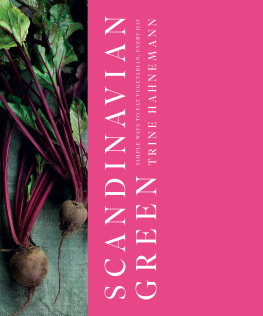
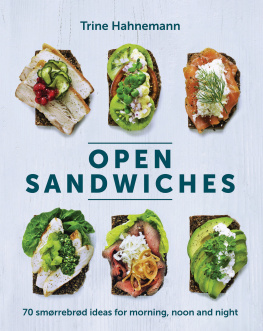

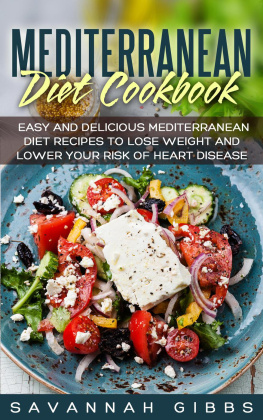
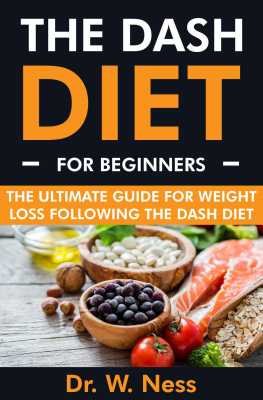
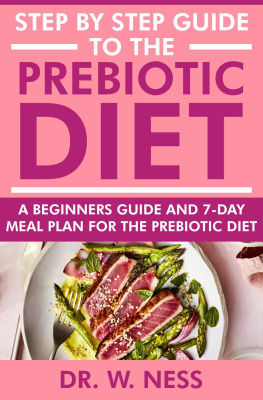
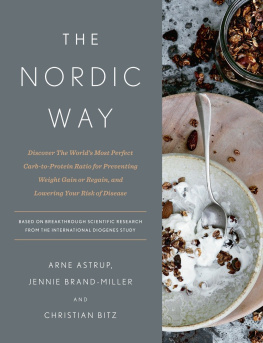
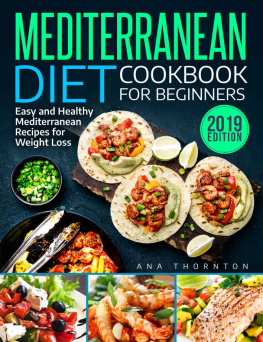
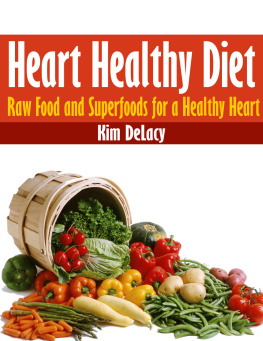
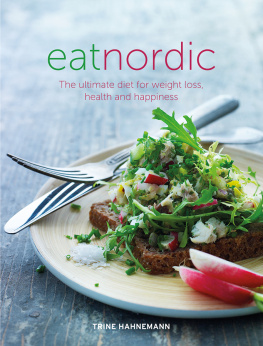
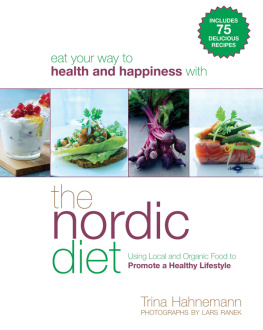



 The countries of the Northern Hemisphere have their own very healthy food culture,ingredients and traditions which have, for too long, been eclipsed by the perceivedbenefits of the cuisines of other nations deemed to be intrinsically better for us.Rediscovering our Northern heritage also helps us address several issues around foodother than health. Eating the Nordic way is grounded in tradition, but is also very much a modern everydaycuisine incorporating influences from other cultures. It is based on the produceavailable in the Northern hemisphere, where many grain and vegetable crops grow naturallyor have ideal conditions for cultivation, where animals live wild or are farmed,and where fish that favour cold waters are caught. Balanced meals with an emphasis on seasonal vegetables and whole grains. Home-cooking with fresh ingredients, including home-baked bread. Eat less. Eat fatty fish twice a week, like herring, mackerel and salmon.
The countries of the Northern Hemisphere have their own very healthy food culture,ingredients and traditions which have, for too long, been eclipsed by the perceivedbenefits of the cuisines of other nations deemed to be intrinsically better for us.Rediscovering our Northern heritage also helps us address several issues around foodother than health. Eating the Nordic way is grounded in tradition, but is also very much a modern everydaycuisine incorporating influences from other cultures. It is based on the produceavailable in the Northern hemisphere, where many grain and vegetable crops grow naturallyor have ideal conditions for cultivation, where animals live wild or are farmed,and where fish that favour cold waters are caught. Balanced meals with an emphasis on seasonal vegetables and whole grains. Home-cooking with fresh ingredients, including home-baked bread. Eat less. Eat fatty fish twice a week, like herring, mackerel and salmon. To eat Nordic is to cook food that is full of flavour, and to eat healthily withouthaving to count calories or obey strict dietary rules.
To eat Nordic is to cook food that is full of flavour, and to eat healthily withouthaving to count calories or obey strict dietary rules.  No matter how healthily you eat, exercise is still a key to health and happiness.Your heart is a muscle and it needs to be exercised, so cardiovascular exercise isgood for blood circulation, for stress levels and for general psychological wellbeing,as well as to maintain a steady weight throughout your life. If you dont exercisealready, choose something you like walking, swimming, running, cycling somethingyou will actually enjoy doing.
No matter how healthily you eat, exercise is still a key to health and happiness.Your heart is a muscle and it needs to be exercised, so cardiovascular exercise isgood for blood circulation, for stress levels and for general psychological wellbeing,as well as to maintain a steady weight throughout your life. If you dont exercisealready, choose something you like walking, swimming, running, cycling somethingyou will actually enjoy doing.